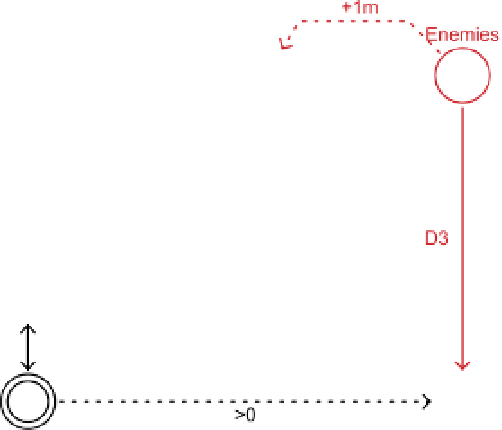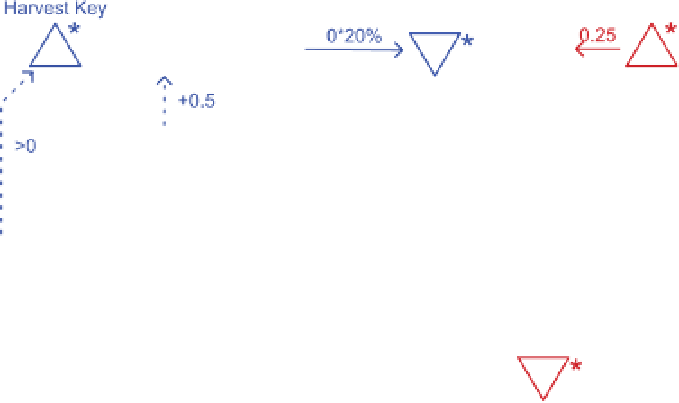Game Development Reference
In-Depth Information
FIGURe 11.15
a multiple feedback
mechanism for locks
and keys
The lock-and-key mechanism we have now leads to a gameplay that is very similar
to the gameplay of a real-time strategy game: Players must balance between harvest-
ing raw materials, fighting, and upgrading their units to keep the enemies under
control and make the final push to complete the game. The combination of a
dynamic
engine
and some form of
dynamic friction
is the heart of most real-time strategy
games. For a multiplayer game, you might replace
dynamic friction
with
attrition
(another form of friction) and add an
arms race
pattern to introduce more base-
building options.
desiGn challenGe
can you design a lock-and-key mechanism that is built around the multiple feedback
pattern? Or any other design pattern that we haven't applied to a lock-and-key
mechanism yet?
Structuring levels Around Dynamic locks and Keys
Level design that is built on relatively simple and nondynamic lock-and-key
mechanisms has to string many of these mechanics together. The big advantage
of dynamic lock-and-key mechanisms is that one or two of them can serve as the
backbone of a level; you don't need as many mechanisms to create a compelling
and lasting gameplay experience. You can already notice this from playing around
with the diagram in Figure 11.15. Simply getting past its single lock will take a lot
of actions and considerably more time than most simple locks. More importantly,
the choice of actions available offers more freedom and requires more strategy from
the player to solve than a nondynamic lock-and-key mechanism that simply hides







